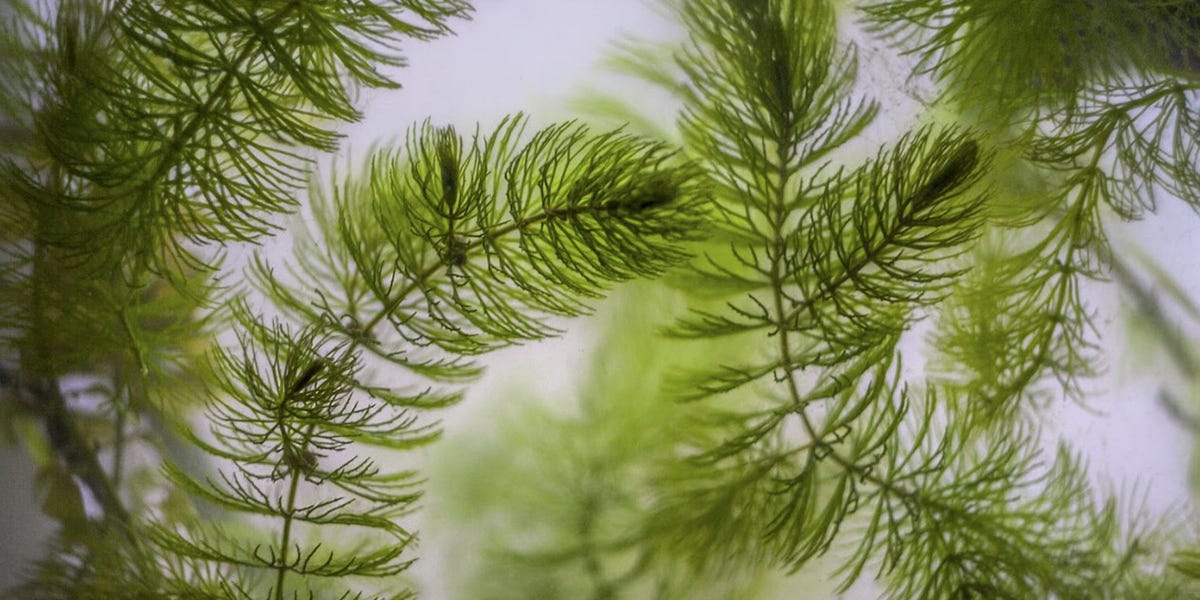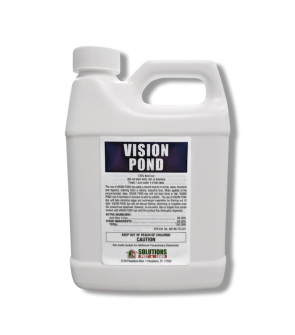Coontail Control
Most Effective Products
Coontail Control: How To Get Rid of Coontail
A common aquatic weed that can be found in ponds, lakes, and streams across the United States, Mexico, Canada, and much of the world is Coontail. Coontail is an invasive aquatic weed that grows below the surface of the water. If left unchecked, this free-floating plant has the capacity to form thick bunches that can cover large segments of a lake or pond.
Coontail does provide some benefits in bodies of water where it grows since fish like to consume the plant and will frequent areas where they are plentiful. Most pond and lake owners find Coontail to do more harm than good when they are large in number as they make a pond look unappealing for fishing or swimming.
If you have Coontail appearing on your water property, the following DIY guide will help you get rid of the invasion. Our experts have put together easy step-by-step directions to treat Coontail cost-effectively using our professional-grade aquatic herbicides.
Identification

Coontail is often confused with milfoil or fanwort. The distinguishing characteristics of Coontail plants are their green, forked, serrated leaves which feel stiff to the touch and are arranged on stems in whorls. This arrangement looks similar to the tail of a raccoon which is why the plant is named Coontail.
Coontail multiples and spreads via small seeds and fragmentation. Fragmentation is a process that takes place when a part of the plant breaks off and forms into a new Coontail plant.
Use our description and image to help you identify whether the plant you are encountering is Coontail. If you need some assistance, contact us and we will help you correctly ID the plant and offer effective control recommendations.
Inspection

Once you have properly identified Coontail, you need to perform an inspection before carrying out any chemical control treatments. You need to see where the Coontail is concentrated, and how severe of a invasion there is.
Where To Inspect
Survey of the body of water where the Coontail is growing, which can be a pond or lake. It must be taken into consideration how the lake or pond is used, the size of the lake, and the aquatic life that inhabits the water as well as the wildlife that frequents the water.
Asking yourself these questions will help you to determine what the best aquatic herbicide should be used for your particular situation and how to approach treatment so there is no harm done to the habitat and the aquatic wildlife.
What to look for
If you have Coontail, finding them should be quite easy. Look for its free-floating feathery fan-shaped leaves. When touching it, you'll notice it has a rough feel due to its several small teeth found on the midriff.
Treatment
If you wish to go the mechanical route, you could grab a rake and remove the Coontail this way but chances are you have a lot of Coontail on your pond or water body so that would be a time-consuming task. The best option we recommend taking is aquatic herbicides.
Our top recommendation to treat Coontail is Flumigard WDG (Clipper) Aquatic Herbicide Flumioxazin. This product is a fast acting aquatic herbicide and does a great job of killing Coontail. Before mixing and applying this product into a sprayer, make sure you put on the proper PPE (gloves, glasses, respirator mask)
Step 1 - Prepare and Mix

Before mixing and application, you will need to calculate the size of the water body you wish to treat to determine how much Flumigard WDG (Clipper) Aquatic Herbicide Flumioxazin you will need. For water bodies, the measurement is usually done by calculating the acreage or acre-foot. To do this, measure the length, width, and average depth of the water body in feet then divide by 43,560 (Length (ft) x Width (ft) x Average Depth (ft) / 43,560 = Acre-feet).
For surface applications, use 6 to 12 oz. of Flumigard WDG (Clipper) Aquatic Herbicide Flumioxazin per 30 gallons of water per acre.
Step 2 - Apply Flumigard WDG (Clipper) Aquatic Herbicide Flumioxazin to target Coontail
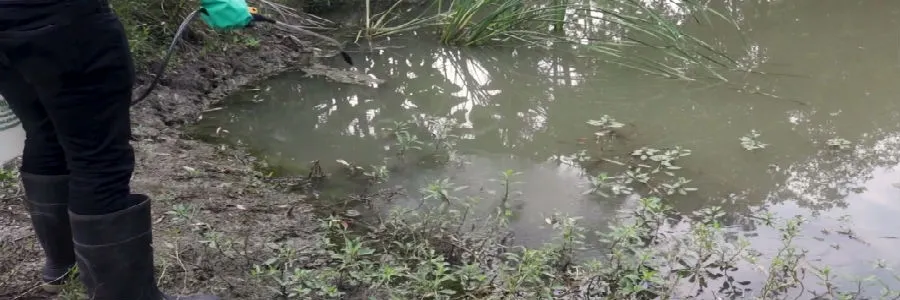
Once the Flumigard WDG (Clipper) Aquatic Herbicide Flumioxazin is well-mixed. Depending on the targeted weed and the water’s depth, you can spray the herbicide over the water along the shoreline, spot treat Coontail that has reached the water surface, or broadcast spray over the water’s surface. Use a fan spray nozzle to ensure an even coating on the water surface.
Timing is important when treating Coontail as it is recommended to spray them between late July and first frost when the plant is actively growing.
Step 3 - Follow Up Applications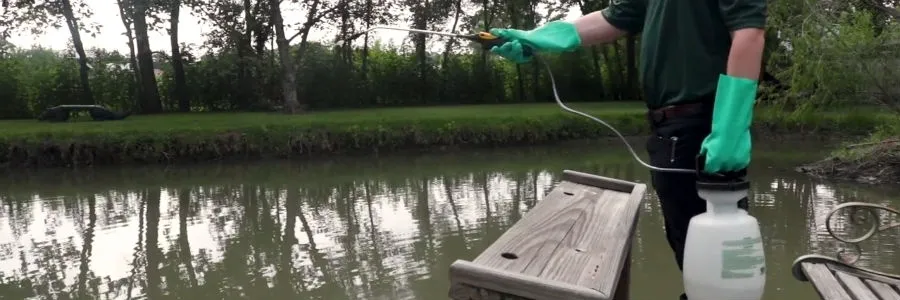
Depending on the size of your pond or lake, you may need to conduct treatment in sections, waiting 2 weeks between treatments until you’ve treated the entire body of water. Reapplication may be necessary 28 days after the initial application is complete. Coontail can be a stubborn weed to remove so monitoring your water is key and repeated application is crucial to get complete control.
Once Coontail has been treated, it usually does not grow back because it doesn't have any roots but with it being gone, other weeds may come to take its place, so reapplication may be needed to keep the water clear.
Prevention
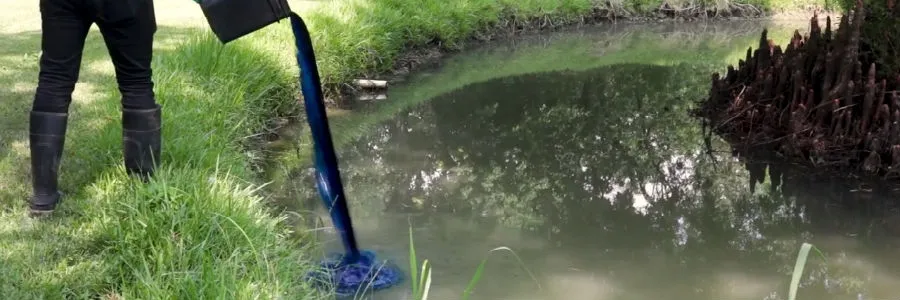
Apply Vision Pond Dye to your pond to discourage the re-establishment of coontail. This product is a filtering agent, and reduces sunlight to the pond, hindering photosynthesis and hindering plant growth. On top of that, the dye keeps your water looking great.
Measure the appropriate amount of Vision Pond Dye into a bucket based on your pond area measurement findings. The label recommends applying at a rate of 1 quart per 1 surface acre of water at a 5-foot average depth.
Pour the pond dye over the edge directly into the body of water and the water's natural movement will disperse the dye.
Key Takeaways
- Coontail is a rootless, free-floating invasive plant that can overtake a pond and choke it of its nutrients.
- Flumigard WDG (Clipper) Aquatic Herbicide Flumioxazin is our go-to recommendation to treat for Coontail as it kills the plant quickly and kills all plant cells on contact.
- Vision Pond Dye can help to prevent coontail from growing after control.
